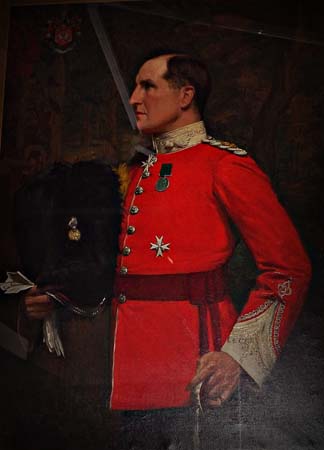
|
Lancashire
Fusiliers of Interest |
|
Sir Richard Lees Knowles
MP
The Mining MP 
A title for a man who spent his life owning and running Coal mines in NW England. He was also MP for West Salford. He was appointed Honorary Colonel of the 3rd Volunteer Batallion - The Lancashire Fusiliers in 1899. War broke out in South Africa later that year and Lees is known to have encouraged the formation of the "Volunteers Active Service Companies" to support the regular Lancashire Fusiliers Batallion in SA. In addition to this he lead the setting up of a compassionate fund
to assist returning servicemen and their families. After the conclusion of the Boer War in SA he sought official recognition
for the Lancashire Fusiliers The motto of the Regiment is " Omnia Audax" ( Audacious
in Everything) also now includes the right to wear the Red rose of Lancaster
on its regiments colours and on monuments to this brave and fearsome
regiment of men. There is a Monument on Chapel Street , Salford called "The
Shouting Fusilier" he also helped to fruition. As for COAL ............he came from a long line of Mining Philanthropists esp in Manchester and surrounding areas. The Sons and grandsons of Andrew Knowles carried on the family business. Robert Knowles who died 1780, started pits in Eagley Bank and Sharples,
north of Bolton. The pits were inherited by his descendants, Andrew
(1735-1810), Robert (1756-1819) and Andrew (1783-1847), his great grandson.
The family had an interest in this area until 1870- lots of Andrews
and Roberts . In 1866 all workers who had joined the fledgling Mining Federation of Great Britain were locked out of the Knowles pits and the Company defeated attempts to unionise the workforce. The company's intransigence towards unions continued up to 1891 when a strike left miners little better off but the firm was forced to negotiate with a union it had up to then refused to recognise. (WIKI - grateful thanks for coal mining history as above ) |